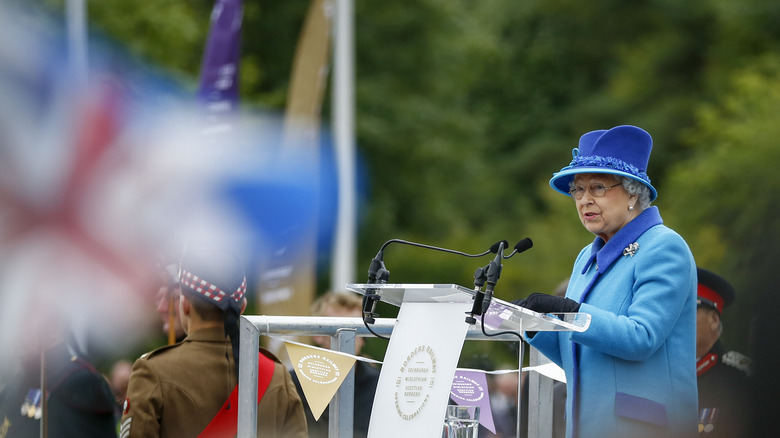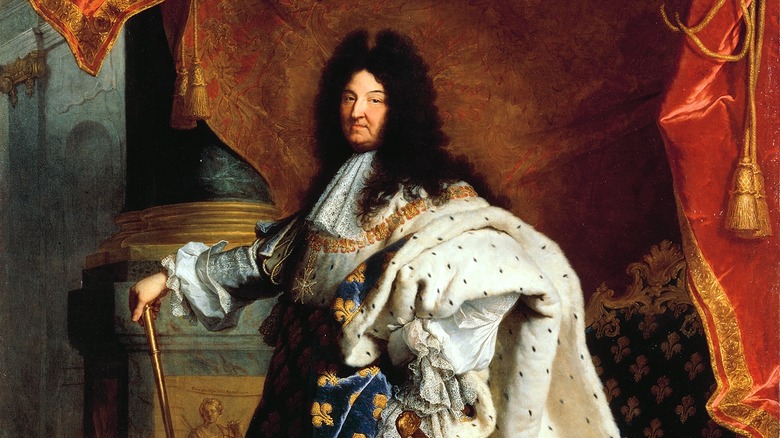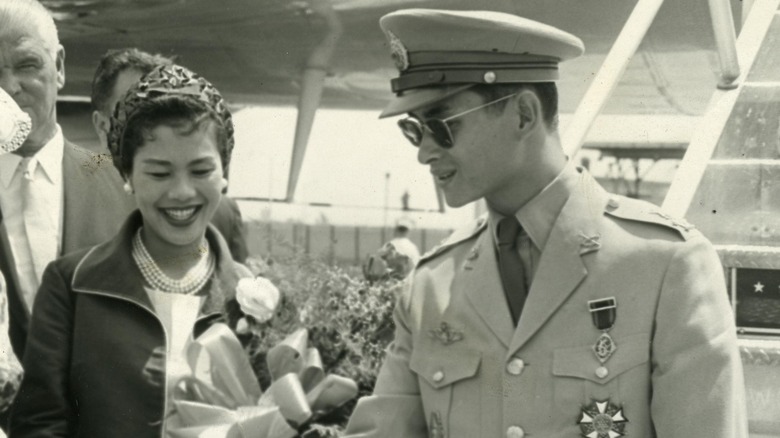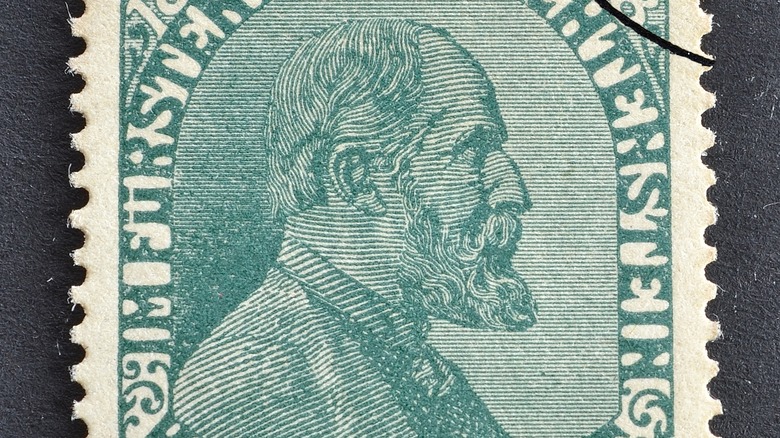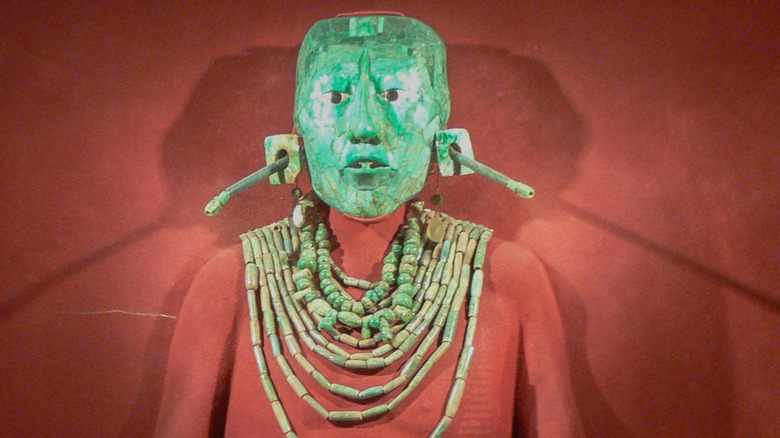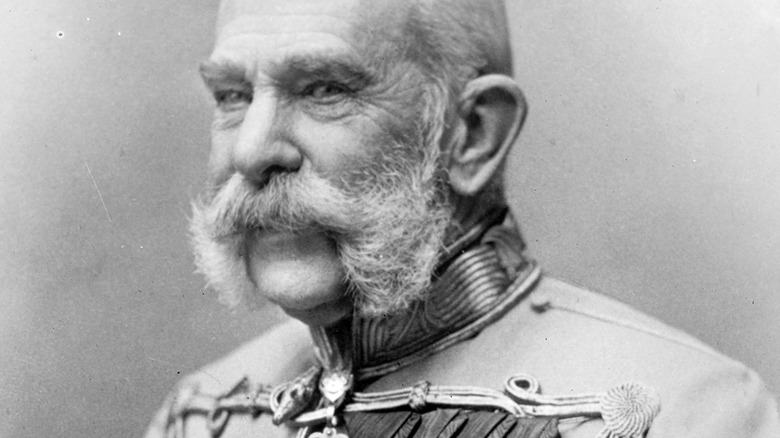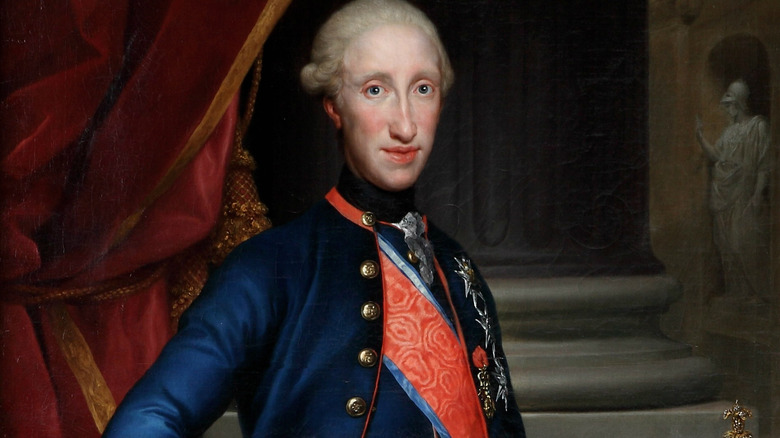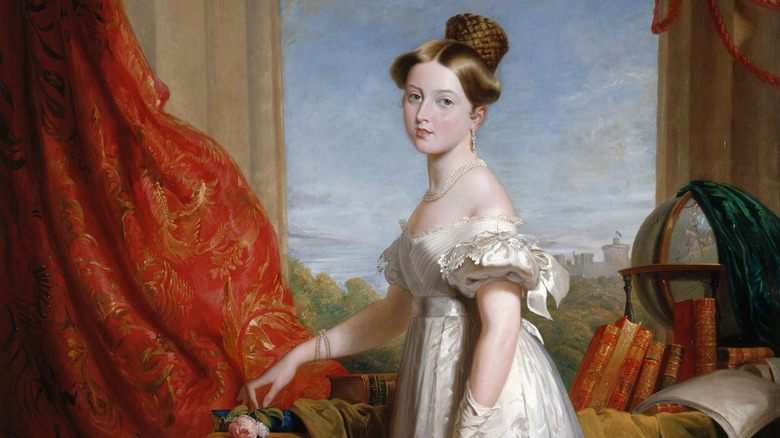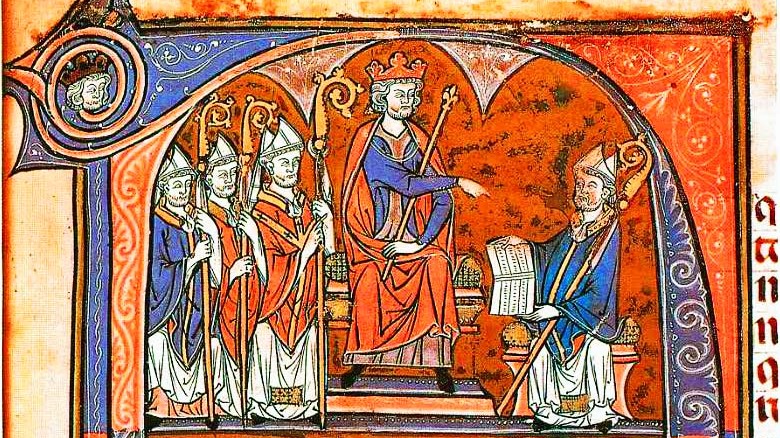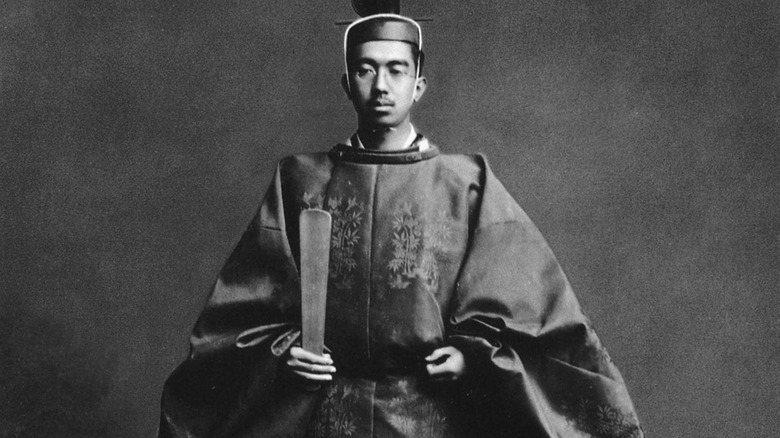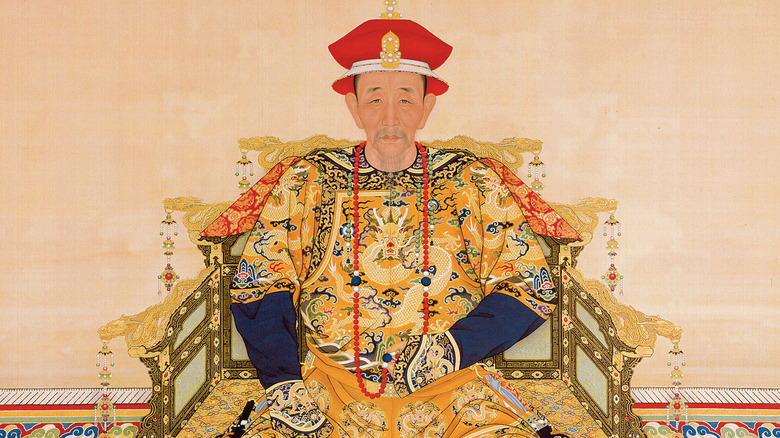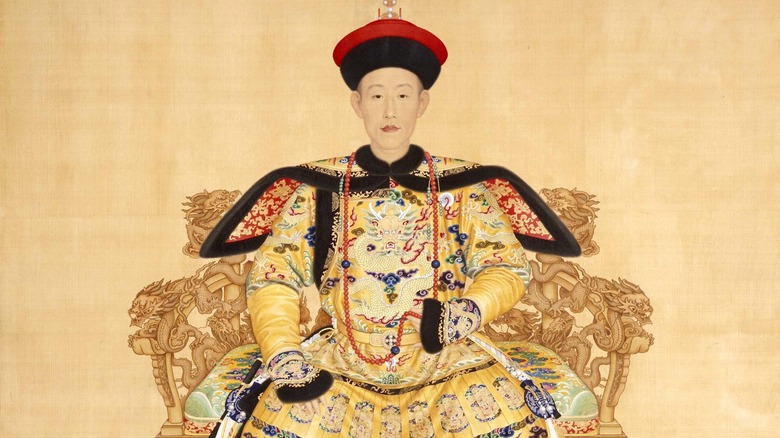Longest-Reigning Monarchs In History
Plenty of countries have had monarchies at some point in their history. Some monarchs have actively helped their country, implementing useful laws or expanding territory, such as the Kangxi emperor of China (via Columbia University). Other monarchs, however, have been terrible, particularly in the days when beheading and burnings at the stake were common. Regardless of whether they were decent rulers or not, however, only a few have ruled so long as to be on a list of the longest-reigning monarchs.
Queen Elizabeth II of the United Kingdom is the only living monarch on the list, while Louis XIV of France — who lived and worked in the 1700s — remains the longest-reigning monarch of a sovereign state. Several of the longest-reigning monarchs in history had regents during their childhoods until they could rule themselves; one notable exception was Prince Johann of Liechtenstein. With that said, here are 12 of the longest-reigning monarchs in history thus far.
Louis XIV of France
As said, Louis XIV was the longest-reigning monarch of a sovereign state, having reigned for 72 years and 110 days; he gained the throne at the age of four after his father died. According to History, the so-named Louis-Dieudonne ("gift of God," due to his birth after his parents' 23 years of marriage), inherited a fractious, messy country. His mother Anne served as his regent, along with her chief minister, Cardinal Jules Mazarin.
A series of revolts from France's nobles made Louis fearful for the rest of his life of revolution; the revolts lasted for five years and even forced Anne and Louis to leave Paris for a time. When Mazarin died in 1661, Louis made the unprecedented step of declaring he would rule without a chief minister, per Connexion France.
Ultimately, Louis ruled his court by controlling France's aristocracy, taxes, and religion. Prior to his rule, most of the taxes collected by the crown never actually reached their intended destination; under his reign, Louis restabilized the tax system. According to Connexion France, Louis required the nobles to visit him at court to obtain exemptions and tax concessions. In this way, the court became a way to control the aristocracy: nobles made marriage agreements there and lived in palace apartments, which prevented them from forming plans for revolt on their own lands.
Louis XIV also outlawed Protestantism, which included revoking the Edict of Nantes. Louis himself was an extremely devout Catholic, seeing himself as the direct representative of God for France.
Elizabeth II of the United Kingdom
Elizabeth II of the United Kingdom, Canada, Australia, and New Zealand is the second-longest reigning monarch of a sovereign state. Since her ascension in 1952, at the age of 25, she has reigned for 70 years. During her Platinum Jubilee, though she missed some events, she said, "I remain committed to serving you to the best of my ability, supported by my family" (via BBC News).
Some have considered Elizabeth's reign to be a second Golden Age, quite like the reign of the first Elizabeth in the 1500s. Reuters writes that she has ensured the survival of the monarchy in an increasingly modern time when some might believe its time to be at an end. She successfully guided the United Kingdom out of the aftermath of World War II and through the next several decades of upheaval.
Britain's empire of the past has vanished, leading to a Commonwealth today, to which Elizabeth has been indispensable. Though she's never given a private interview on the subject, historian David Starkey has surmised that Elixsbeth mainly feels as though she's doing her job, and will never give her reign any sort of title, leaving that up to others (via Reuters). Ultimately, the prevailing view is that Elizabeth has performed her role to the best of her ability while still moving with the times and managing to keep the monarchy popular.
Rama IX of Thailand
Born Bhumibol Adulyadej, Rama IX of Thailand was never expected to become king, but he ascended after his older brother was killed in a suspicious gun accident. He would go on to reign for a long time — from his coronation in 1950 to 2016.
He was born in Massachusetts, and though his family returned to Thailand soon after, his mother relocated him and his siblings to Switzerland after a revolution in 1932, according to ThoughtCo. His brother inherited the throne in 1935 but died in 1946. Adulyadej stayed in Switzerland to finish his degree and was crowned in 1950, soon after his marriage.
He was beloved in Thailand and was also an accomplished jazz musician. During his early reign, he traveled around Thailand extensively to show himself to the people, which boosted the throne's prestige significantly. Unfortunately, Rama IX held the throne during a period of major unrest, with coups taking place throughout the 1970s and '80s. In 1973, he even opened the palace to protestors as they tried to escape soldiers sent out by Field Marshal Thanom Kittikachorn, the Thai dictator at the time, via The New York Times.
Ultimately, in 1992, Rama helped to bring a civilian government to Thailand. The Royal Thai Embassy in Vienna writes that Rama IX's time abroad before taking up the throne was a valuable time for him that, in turn, benefited Thailand itself through modernization and putting the people first.
Johann II of Liechtenstein
Johann II of Liechtenstein served as the prince of Liechtenstein for 70 years and 91 days. His reign is known for being the longest modern reign where a regent wasn't called for due to the ruler being a minor, per Royal Central, mainly because he inherited the throne from his father shortly after he had turned 18.
Johann granted two constitutions, the second one making the principality into a constitutional monarchy; it also gave commoners more rights than they had previously. Johann also carefully negotiated relations with Austria-Hungary and Switzerland, which were fraught during World War I. Johann II was ultimately succeeded by his brother Franz I (via Royal Central).
Johann II was an avid art collector, according to the Princely House of Liechtenstein, and had Vaduz Castle renovated during his reign; Liechtenstein Castle was also rebuilt. In addition to being a collector, Johann II was a patron of the arts, supporting museums throughout the Austro-Hungarian Empire. He also helped found a fruit and horticultural school in 1895. Overall, Johann II was a believer in social reform, giving social benefits to all his staff.
K'inich Janaab' Pakal I of Palenque
K'inich Janaab' Pakal, also known as Pakal the Great, reigned over the Mesoamerican city-state of Palenque. He served for 68 years and is thought to have commissioned much of the architecture of Palenque, which was in modern-day Chiapas, Mexico, according to ScienceAlert. His reign is the longest in the Americas, as he took the throne at age 12 and died at the age of 80.
He's thought to have been buried in a building now known as House E, where a mask that possibly bears his face was found in 2018. Placed along with the mask were pearls, jadeite, flint, obsidian, other jewels, and ceramic and alabaster figures and pieces (via Science Alert). Some of those materials weren't native to Palenque, indicating the high value of the items. The mask shows the ruler in old age, with a heavily lined face. Other archeologists are continuing to investigate the Temple of the Inscriptions, also known as Pakal's funerary monument, per MayaRuins.com.
Franz Joseph I of Austria and Austria-Hungary
Franz Joseph of Austria and Austria-Hungary reigned for nearly 68 years; he died in the middle of World War I in 1916. After his uncle Ferdinand abdicated in 1848, Franz Joseph was proclaimed emperor. He was likely most influenced by his early adviser Klemens, Furst von Metternich, and his wife Elisabeth of Bavaria, according to Britannica. Franz Joseph negotiated Austria and Hungary so that the two existed as equal partners under his rule.
Franz Joseph ruled fairly peacefully in the latter half of his lengthy reign but was troubled by personal losses, reports the Christian History Institute. His brother Maximilian was killed by the Mexican Republic in 1867 after declaring himself emperor, while his wife Elisabeth was assassinated in 1898. Additionally, in 1889, his son Rudolph had an affair, then apparently murdered his lover and took his own life. Franz Joseph ultimately let himself be talked into issuing the ultimatum to Serbia that led to the assassination of his nephew. Franz Joseph died at the age of 86 of pneumonia.
Ferdinand I of the Two Siciles
Ferdinand I of the Two Sicilies reigned for 65 years, during which time he was deposed twice from his concurrent role as king of Naples. He was restored to his thrones in 1816, henceforth becoming the king of the Two Sicilies. Ferdinand inherited his throne of Naples when his father became king of Spain; a regency council ruled for him in his minority, according to Britannica.
His wife Maria Carolina of Austria was very influential in his court and led Naples in the Austro-English coalition against the liberal ideals of the French Revolution. Per Britannica, the French invaded Naples in 1798, forcing Ferdinand to flee to Sicily. Napoleon's armies then invaded in 1806, and Ferdinand went to Sicily again; ultimately, yielding to foreign pressure, he granted Sicily a constitution.
In 1816, Ferdinand returned as king of the Two Sicilies, only to once again crack down with absolutist rule. Revolution struck in 1820, and Ferdinand was forced to grant the people a constitution a second time, via OnWar.com. The next year, however, he had help in the overthrow of Naples' constitutional government. Ferdinand died soon after, however, and was succeeded by his son Francis I.
Victoria of the United Kingdom
Victoria of the United Kingdom and Ireland was so influential an entire age was named after her: the Victorian Age (also the Victorian era or period). She reigned for 63 years, and under her reign, Britain had a "worldwide empire on which the sun never set," according to The Royal Family.
Victoria became queen at the age of 18 and was heavily influenced in her early reign by her prime minister Lord Melbourne and her husband Prince Albert. When Albert died in 1861, it took Victoria several years to consider resuming public duties; in the meantime, a republican movement gained strength, per History. However, Victoria's foreign policy efforts to avert war gained her popularity, as did increasing imperial views from the 1870s onward. She became the empress of India in 1876.
Though the power of the sovereign declined during her reign, she also showed how influential she could be in the areas where she did hold power. For example, though she could be conservative on certain social issues, Victoria also advocated for the poor and supported various charities involved in education and medicine (via The Royal Family). Her long reign began to shape the modern image of what the constitutional monarch would look like, a vision now embodied in her descendent Elizabeth II.
James I of Aragon
James I of Aragon ruled for 62 years, from 1213 to 1276. During his reign, he expanded Aragon in three directions: south, southeast, and north, adding the Balearic Islands and Valencia to his territory. He is now known as one of Aragon's most famous medieval kings, explains Britannica.
James was 5 years old when his father died fighting in the Crusades; at the time, James himself was being held hostage by the crusaders. He was released the next year and sent to the Knights Templars of Monzon, who educated him, according to La Real Casa d'Aragona. James I's great-uncle served as his regent for a time before his resignation. Ultimately, James fully began to reign in 1227 and began his period of conquest, which would continue for decades (via Britannica).
A natural leader, James also took interest in law and administration. A code of maritime law was established that would grow in importance as time went on; meanwhile, Valencia received a legal system and several cities gained civic administrations. James overall brought his separate peoples together in political maturity.
Showa of Japan
Emperor Showa of Japan ruled for 62 years and 13 days. He was regarded as divine by Buddhist and Shinto sects, and is Japan's longest-reigning monarch, according to Atomic Heritage. His father ascended to the throne in 1912, and Hirohito (only known as Showa, his reigning name meaning "enlightened harmony," after his death) followed suit in 1926 (via History). The ideology of "kodo" was followed heavily during his considerable reign, and it encouraged the expansion and subservience of individuals to the imperial state.
He was emperor of Japan during the entirety of World War II, including the attack on Pearl Harbor and Japan's surrender in 1945. Scholars have debated for years about how much power Hirohito actually held during the war, and how much influence he actually held regarding war decisions. He was not tried for war crimes as many Japanese government officials were (via Atomic Heritage). On the other hand, many scholars point to a trend of his inaction in a time when action could have saved lives or prevented atrocities.
After the war, Hirohito signed a new constitution which made him a figurehead with no political power. He publicly mourned the lives lost at Nagasaki and Hiroshima, and in 1971, said there were parts of the war he felt "personally sorry for," per the Institute of the Study of Human Rights. He made regular public appearances throughout the rest of his life and died in 1989.
Kangxi Emperor of China
The Kangxi emperor of China ruled for 61 years, from the middle of the 15th century to the beginning of the 16th. He was the second emperor of the Qing dynasty, according to Sotheby's. He oversaw the expansion of the Chinese empire, including into Tibet. He also encouraged Western education and arts, as well as Roman Catholicism.
Despite being the third son of the emperor, upon his father's death in 1661, the Kangxi emperor, age 6 (though, some sources say 7 or 8), was immediately made emperor due to his mother's birth status being higher than those of his brothers' mothers. His regents were four Manchu courtiers. Though the Kangxi emperor began learning how to rule at the age of 13, power was still held by his courtiers, two of whom eventually lead a coup against him, per Britannica. The 15-year-old emperor allied with his grandmother and his Chinese tutor and regained his throne.
His first order of business was eliminating three South Chinese vassal kings. He then forced the Zheng regime in Taiwan to surrender to him. The Kangxi emperor continued conquering territory and his enemies throughout his long reign. According to Recording the Grandeur of the Qing at Columbia University, the Kangxi emperor worked hard to bring the scholarly elite of China over to his way of governing, and the people of China soon followed. The Kangxi emperor was also an art patron in China and commissioned several scrolls depicting his tours to South China.
Qianlong Emperor of China
According to Britannica, the Qianlong emperor ruled China for 60 years in the mid-1700s, overseeing the military campaigns that banished the Mongol and Turkish threats. As a young boy, his education was carefully planned out, as it was arranged for him to take the throne after his grandfather, who saw in him the makings of a great leader. He became emperor at the age of 24. Military campaigns were extremely successful in northeast China, but less so in the south. Several rebellions were crushed over the next few decades.
As Recording the Grandeur of the Qing explains, under the Qianlong emperor's rule, China grew to a size that it had never been seen before, as it included Tibet and a large amount of central Asia. Overall, East Asia was summarily dominated by China during the Qianlong emperor's reign. Due to the vastness of the empire, a multiethnic state began to emerge, comprised of Han Chinese, Manchus, Tibetans, and Mongols, among others. The Qianlong emperor saw himself as a universal ruler of many peoples, and was a great patron of the arts; he abdicated the throne in 1796 and died in 1799 (via Britannica).
